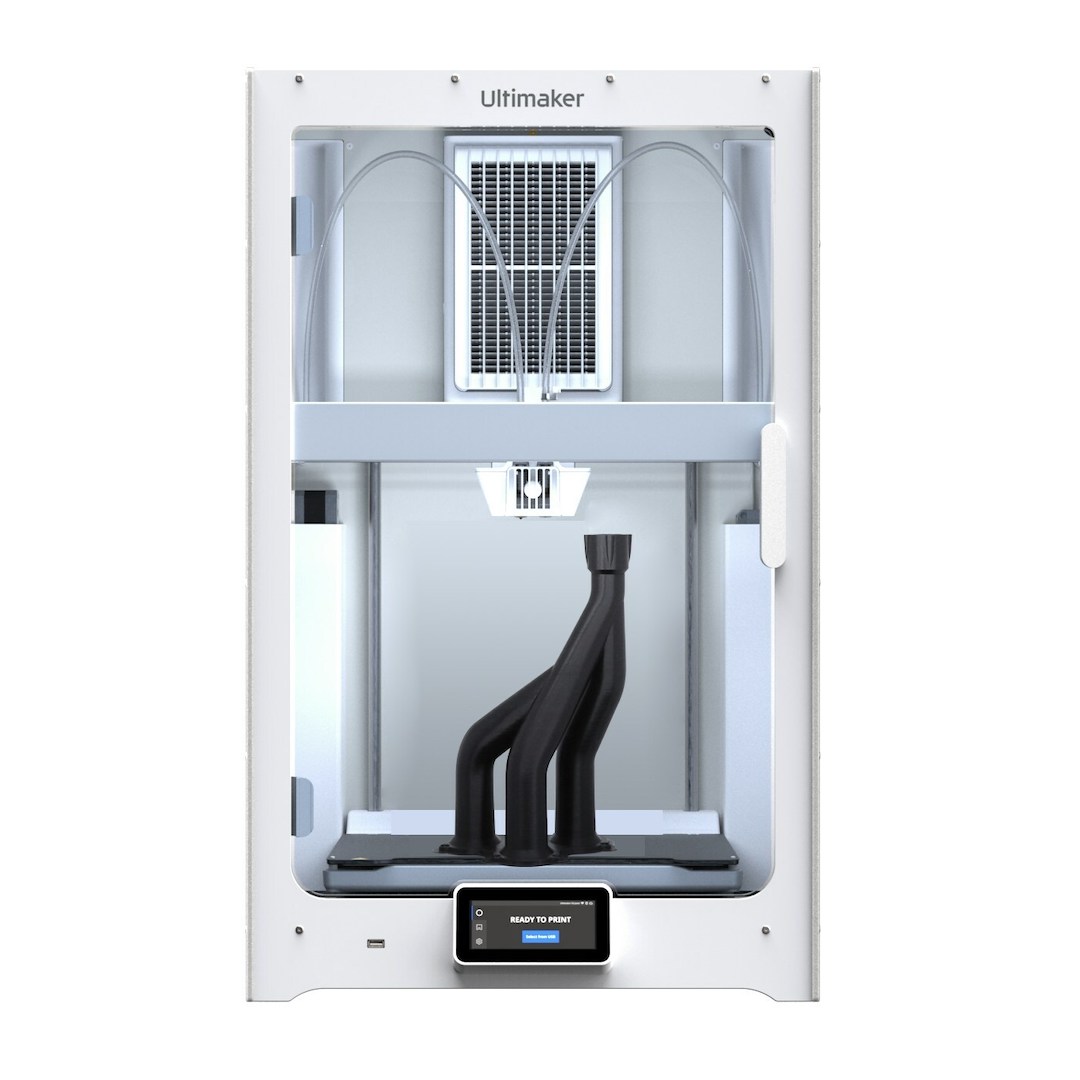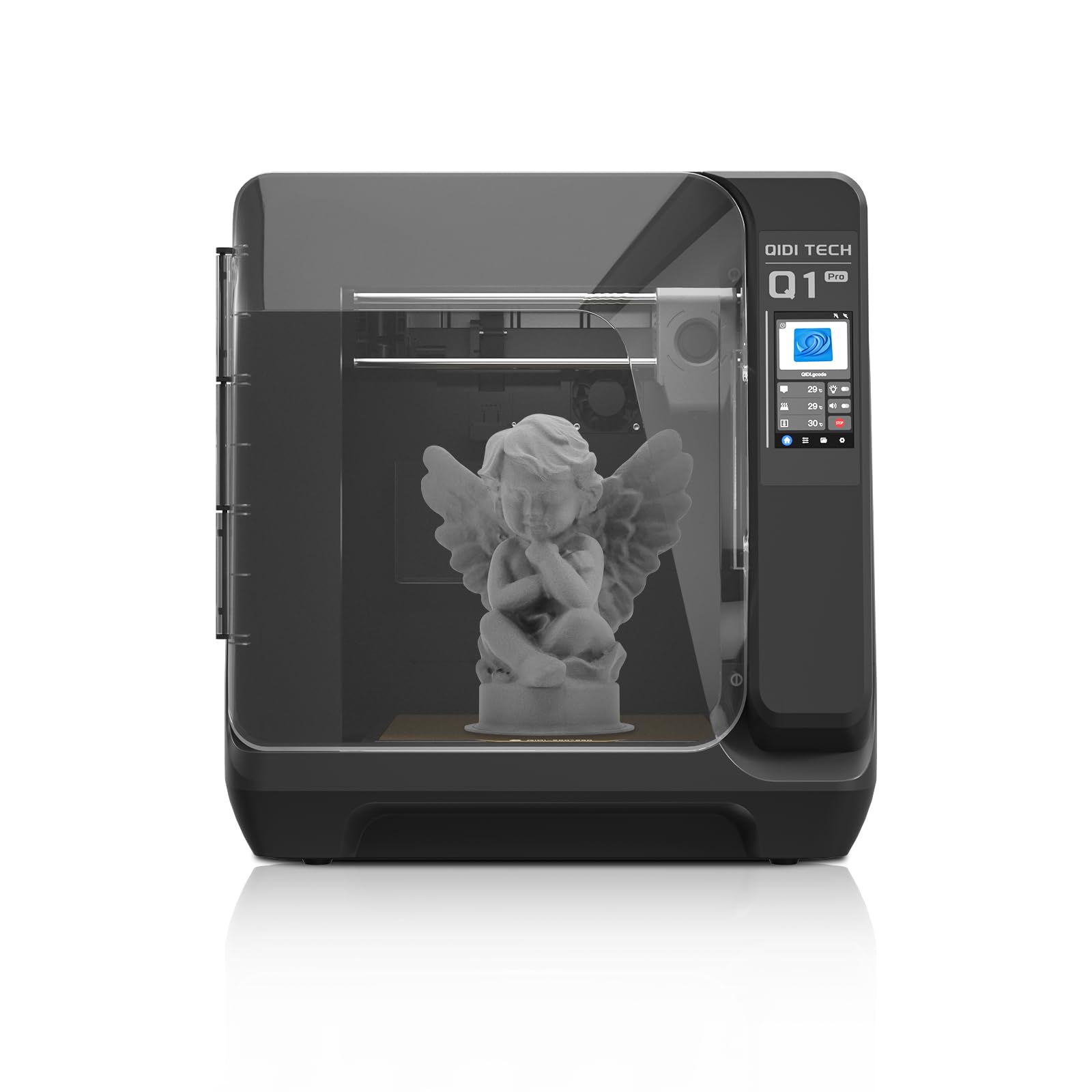Compare S7 vs Q1 PRO
Comparison between the best 3D printers
Choose the best 3D printer at the best price. The cheapest 3D printers are here.
Buy a 3D printer here with 3D Fila.
 |
 |
|
| Model | S7 |
Q1 PRO[BUY Q1 PRO] |
| Printing Material | Filament | Filament |
| Buy Filament for Ultimaker S7 | Buy Filament forQIDI Q1 PRO | |
| Estimated price | $8300,00 | $449,00 |
| Manufacturer | Ultimaker | QIDI |
| Release Year | 2022 | 2024 |
| Print Volume [mm] | 240x330x300 | 245x245x245 |
| Printer Size [mm] | 585x495x800 | 467x477x489 |
| Weight [kg] | 29 | 20 |
| Power Loss Recovery | YES | YES |
| Enclosed printer | YES | YES |
| Bed Leveling | Automatic | Automatic |
| Filament End Sensor | YES | YES |
| Bed type | Heated | Heated |
| Power supply system | Bowden | Direct Drive |
| Standard nozzle | 0,4 | 0,4 |
| Maximum Nozzle Temperature [°C] | 280 | 350 |
| Maximum Bed Temperature [°C] | 120 | 120 |
| Maximum printing speed [mm/s] | 180 | 600 |
| Filament holder | YES | YES |
| Camera for supervision | YES | YES |
| Recommended filaments | PLA, ABS, PETG, PC, Nylon, Tritan, PP | PLA、ABS、ASA、PETG、TPU、PC、PA、PA-CF、PET-CF、PAHT-CF etc. |
| Recommended slicers | Cura | QIDI Slicer/Cura/Simplify 3D/ORCA/PRUSA Slicer |
| Maximum Resolution [mm] | 0,1 | 0,1 |
| Processor | Cortex-A53,64-bit Processor | |
| Display | Display touchscreen 4,7'' | Touchscreen 4,3'' |
| Power Supply | 500 W | 350 W |
| Connectivity | USB / Wi-Fi | WiFi/USB Flash Drive/Ethernet Cable |
| Operating systems | Windows, Mac, Linux | Windows, Linux, Macbook |
| Date of registration in the system | 2023-01-28 | 2024-07-09 |
| Release date | 2022 | 2024 |
| Extra features | The UltiMaker S7 printer features a series of technological innovations to enhance 3D printing. It incorporates a flexible, magnetic build plate with PEI coating, promoting better adhesion and easier part removal. Its new inductive sensor significantly improves bed leveling, ensuring perpendicular and accurate prints. In addition, the S7 has a higher quality camera for remote monitoring, an integrated air filter, and uses a unique glass door to maintain a constant temperature in the print chamber. The machine is also compatible with the expansion kit for metal printing. | The QIDI Q1 Pro 3D printer stands out for its Core XY structure and heating chambers that reach up to 60ºC, ideal for advanced materials such as ABS and Nylon. It features Klipper firmware, an automatic leveling system, a high-flow extruder with a double metal nozzle and a hotend that reaches 350ºC. It offers connectivity via Wi-Fi, USB and Ethernet, as well as a 1080p camera for remote monitoring and an intuitive touchscreen for easy operation. |
| Support for multiple colors and materials (AMS and CFS) | NO | NO |
Notes * |
||
| Cost-benefit | 1 / 10 | 8 / 10 |
| Hardware | 3.6 / 10 | 4.8 / 10 |
| Tela | . | . |
| Print volume | 4 / 10 | 3 / 10 |
| Performance | 1 / 10 | 5 / 10 |
| [BUY Q1 PRO] |
Conclusion |
| In comparing the Ultimaker S7 and the QIDI Q1 Pro 3D printers, it's clear that each printer serves different needs and preferences within the 3D printing community. The Ultimaker S7, although significantly more expensive, is designed for users requiring high-quality prints and advanced features. It boasts a larger print volume, exceptional camera quality, and enhanced temperature control, making it suitable for professional applications and complex materials. Its innovative design elements, such as the magnetic build plate and integrated air filter, further add to its appeal. Conversely, the QIDI Q1 Pro offers a compelling option for budget-conscious users without sacrificing too much in terms of features. Priced much lower, it provides excellent connectivity options, a robust hotend capable of reaching higher temperatures, and a high printing speed, making it an exceptional choice for those who prioritize performance and versatility in a desktop printer. Its Core XY structure allows for efficient movements, thus contributing to quicker print times. When assessing the cost-benefit ratio, the QIDI Q1 Pro excels, receiving higher scores in multiple categories, including performance and hardware. It appeals to hobbyists and small businesses looking for a capable yet affordable 3D printing solution. In conclusion, the best choice comes down to the user's specific needs: those invested in professional-grade 3D printing and willing to invest significantly may find the Ultimaker S7 an ideal choice, while budget-conscious users seeking high performance and efficiency should opt for the QIDI Q1 Pro. Each printer offers unique strengths, ensuring that there is a suitable option for varying requirements and budgets. |

